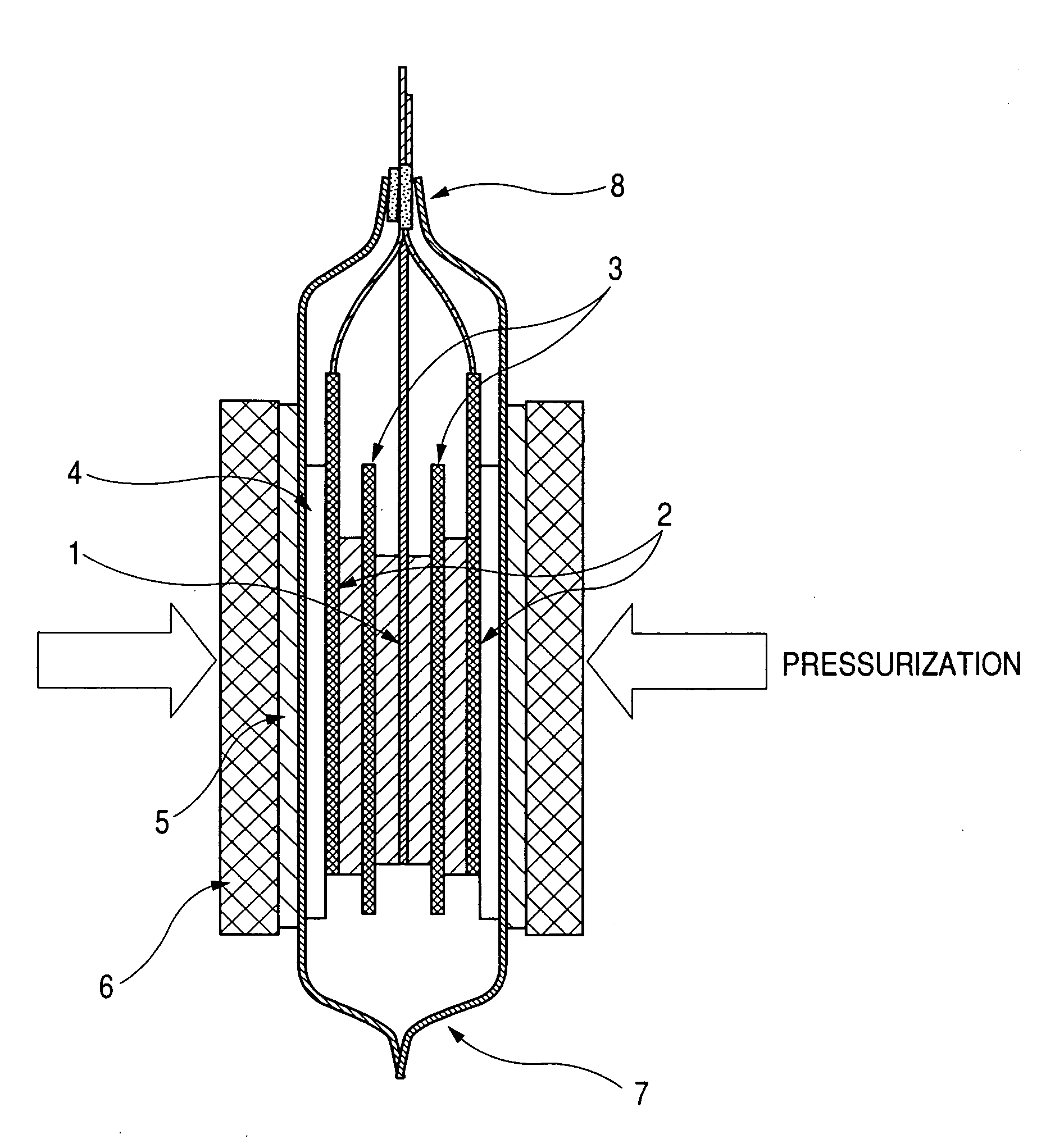Nonaqueous electrolyte and lithium secondary battery employing the same
a technology of nonaqueous electrolyte and lithium secondary battery, which is applied in the manufacture of non-aqueous electrolyte cells, cell components, final products, etc., and can solve the problems of short-circuit failure inside the cell, decreased efficiency of charging and discharging, and reduced cycle characteristics
- Summary
- Abstract
- Description
- Claims
- Application Information
AI Technical Summary
Benefits of technology
Problems solved by technology
Method used
Image
Examples
example 1
[Production of Positive Electrode]
[0163] A positive electrode was obtained by mixing 90% by weight of lithium nickel compound oxide (LiNi0.82Co0.15Al0.03O2), 5% by weight of polyvinylidene fluoride (PVdF), and 5% by weight of acetylene black, adding N-methylpyrrolidone to form a slurry, and applying the slurry onto both surfaces of a current collector made of aluminum, followed by drying.
[Production of Negative Electrode]
[0164] A negative electrode was obtained by mixing 90% by weight of graphite powder and 10% by weight of PVdF, adding N-methylpyrrolidone to form a slurry, and applying the slurry onto one surface of a current collector made of copper, followed by drying.
[Blending of Electrolyte]
[0165] A base electrolyte was prepared by adding 2 parts by weight of vinylene carbonate to 100 parts by weight of a mixed solvent of ethylene carbonate and ethyl methyl carbonate (mixing ratio of 1:3 by volume) containing LiPF6 in a ratio of 1.25 mol / L. To the base electrolyte was adde...
example 2
[0172] A lithium secondary battery was prepared in the same manner as in Example 1 with the exception of the use of an electrolyte in which the amount of 1,2,4-butanetriol trimethanesulfonate added was changed to 3 parts by weight, and battery characteristic tests the same as in Example 1 were conducted. The results are shown in Table 1.
example 3
[0173] A lithium secondary battery was prepared in the same manner as in Example 1 with the exception of the use of an electrolyte in which the amount of 1,2,4-butanetriol trimethanesulfonate added was changed to 5 parts by weight, and battery characteristic tests the same as in Example 1 were conducted. The results are shown in Table 1.
PUM
 Login to View More
Login to View More Abstract
Description
Claims
Application Information
 Login to View More
Login to View More - R&D
- Intellectual Property
- Life Sciences
- Materials
- Tech Scout
- Unparalleled Data Quality
- Higher Quality Content
- 60% Fewer Hallucinations
Browse by: Latest US Patents, China's latest patents, Technical Efficacy Thesaurus, Application Domain, Technology Topic, Popular Technical Reports.
© 2025 PatSnap. All rights reserved.Legal|Privacy policy|Modern Slavery Act Transparency Statement|Sitemap|About US| Contact US: help@patsnap.com



